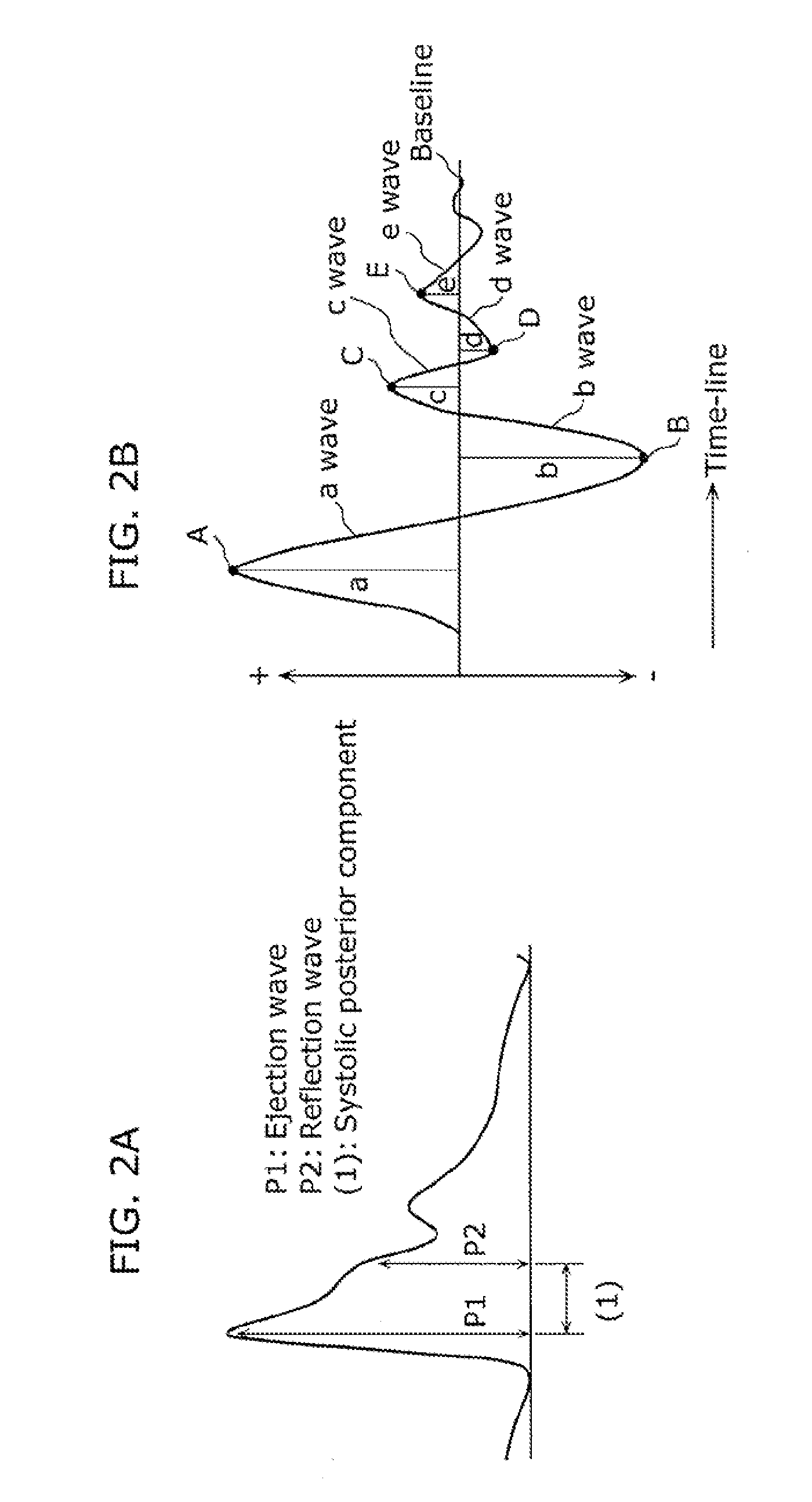Human fatigue assessment device and human fatigue assessment method
- Summary
- Abstract
- Description
- Claims
- Application Information
AI Technical Summary
Benefits of technology
Problems solved by technology
Method used
Image
Examples
embodiment 1
[0088]FIG. 1 is a block diagram illustrating a configuration of the human fatigue assessment device 100 according to Embodiment 1 of the present invention.
[0089]As illustrated in FIG. 1, the human fatigue assessment device 100 includes a physiological signal measuring unit 101 which measures pulse signals of a user, a feature value extracting unit 102 which extract a feature value from the pulse signals, a storage unit 103 which stores the feature value, and a fatigue determining unit 104 which determines whether or not the user is fatigued. Note that, as illustrated in FIG. 1, the human fatigue assessment device 100 may further include a device controller 105 which controls external devices based on the result of fatigue assessment.
[0090]The physiological signal measuring unit 101 samples the user's pulse waves detected by transducers and others in a predetermined sampling cycle, and obtains pulse wave data in time-series. Fingertips or earlobes are typical parts for attaching the ...
embodiment 2
[0130]FIG. 4 is a block diagram illustrating a configuration of the human fatigue assessment device 400 according to Embodiment 2 of the present invention.
[0131]As illustrated in FIG. 4, the human fatigue assessment device 400 includes a physiological signal measuring unit 401 which measures physiological signals, a feature value extracting unit which extracts feature value from the physiological signals, a storage unit 403 which stores the feature value, and a fatigue type determining unit 406 which determines a type of fatigue. Note that, as illustrated in FIG. 4, the human fatigue assessment device 400 may further include a device controller 405 which controls external devices based on the result of fatigue assessment.
[0132]The physiological signal measuring unit 401 measures heartbeat or the pulse waves of the user as the physiological signals. More specifically, the physiological signal measuring unit 401 is a living body sensor which measures physiological signals such as elec...
embodiment 3
[0164]FIG. 6 is a block diagram illustrating a configuration of the human fatigue assessment device 600 according to Embodiment 3 of the present invention. In FIG. 6, the same reference numerals may be assigned to the components identical to those in FIG. 4, and the description thereof may be omitted.
[0165]As illustrated in FIG. 6, the human fatigue assessment device 600 includes a physiological signal measuring unit 401, a feature value extracting unit 602, a storage unit 603, and a fatigue type determining unit 606, and further includes a checking unit 601 for checking whether the user is in an open-eye state or a closed-eye state. The human fatigue assessment device 600 may further include the device controller 405.
[0166]Through the potentiality demonstration experiments regarding the non-invasive assessment of human fatigue, the inventors found out that an α wave in the closed-eye state and a β wave in the open-eye state and in the closed-eye state extracted based on the brain s...
PUM
 Login to View More
Login to View More Abstract
Description
Claims
Application Information
 Login to View More
Login to View More - R&D Engineer
- R&D Manager
- IP Professional
- Industry Leading Data Capabilities
- Powerful AI technology
- Patent DNA Extraction
Browse by: Latest US Patents, China's latest patents, Technical Efficacy Thesaurus, Application Domain, Technology Topic, Popular Technical Reports.
© 2024 PatSnap. All rights reserved.Legal|Privacy policy|Modern Slavery Act Transparency Statement|Sitemap|About US| Contact US: help@patsnap.com










